What Is Lawn Spray Painting? Uses, Tips, Pros & Cons
-

- Last updated:
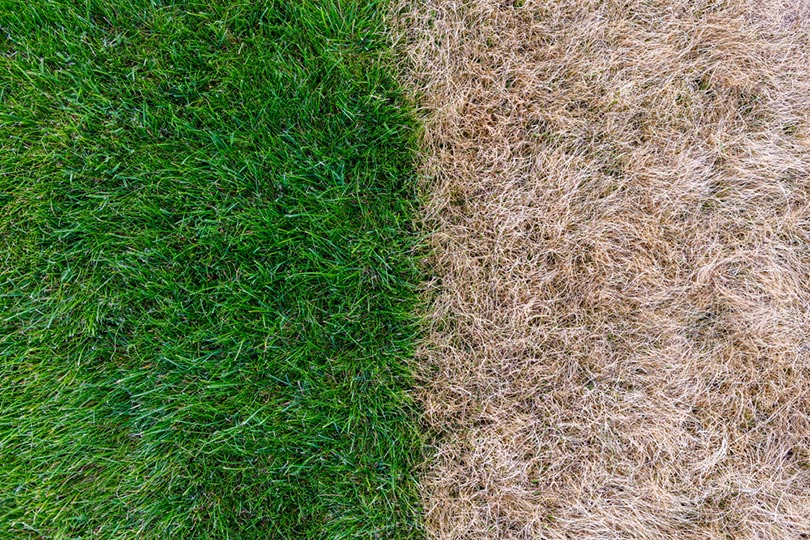
Having a beautiful lawn sometimes does not call for orthodox means such as seeding and sodding. Spread your wings, be creative and explore other means, such as lawn spray painting.
Spray on the lawn? Sure, sounds like the quickest way to kill grass! Spray painting is the ultimate solution to browned, yellowed, or diseased grasses. It transforms discolored patches into a natural cover. So, what exactly is it? How did it come into existence? Does it provide stunning results, as some homeowners profess? And how do you spray paint your lawn?
These are some of the questions this article seeks to answer.
Click Below to Jump Ahead:
What Is Lawn Spray Painting?
A direct answer is using paints to green up the lawn. It involves buying ready-to-use or concentrated paint with green pigments and spraying it on the lawn. This grass-specific paint is used to enhance the green color or turn drought-bitten or frost-discolored grass green.
In the 1950s, Larry Krieger developed several dyes in water-soluble acrylic latex base to be used for Hollywood movie props to simulate natural grass. The practice soon gained popularity in the California regions, and golf superintendents started using it across the south.
The southern part of the USA often experiences extreme hot and cold weather annually. For warm season grass (common in these regions), coping with the warm weather was easy. The grass grew vibrantly and spread out quite fast. But as summer drought set in, the grass became resource-intensive—weekly watering was needed, and in California deserts, this racked up high bills.
Also, unfortunately, not all grasses responded well to high temperatures. Some places turned brown while others lost their grass cover completely in the middle of the dry season. Initially, overseeding with a mixture of drought-resistant and other grass species was the only option. But it was expensive and time-consuming, and to promise golfers a uniform, attractive all-green cover, the Hollywood movie prop became useful.
Another explanation is that during cold seasons, low temperatures and frost “hibernated” some grass species meaning there was no recorded growth until spring. Spray painting not only assured the course’s playability within a few hours but also ensured grass blades were naturally green.
Since then, the practice has expanded rapidly, and various companies are testing better and more effective color pigments with little repercussions to the grass and the environment.
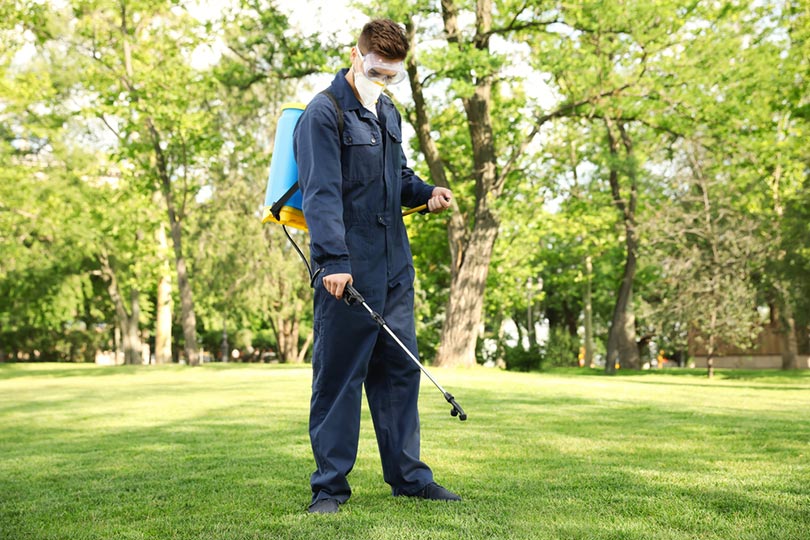
Where Is Lawn Painting Used?
Lawn painting is landscapers’ main weapon against unattractive lawns.
- On grass that is yellowing or turning brown due to high temperatures and lack of water.
- On sick lawns whose grass cover is slowly fading away or is not appealing.
- When you have planted different species of grass but they are still not yet mature to form a colorful cover.
- During fall, some grass species naturally lose their green pigments.
- To uniform the lawn, especially around shaded areas.
Advantages of Turf Painting
If you are tired of waiting until spring to see your lawn wake up and turn green again, you should try turf paint. It has countless advantages.
It Saves Time
Lawn spray painting is instantaneous and saves time, taking only a few hours to establish a green cover. In contrast, overseeding, spray painting’s alternative, takes approximately 10 days for the grass to sprout. The new grass will then require 35 more days to fully cover the ground.
Good at Saving Lawn Maintenance Costs
Typically, a lawn requires watering, weeding, mowing, and constant replenishment of aging grass. This is just the tip of the lawn maintenance iceberg.
In California, lawns are the second largest consumers of municipal water, accounting for 7% of water usage, and on average, a square foot of grass will consume 0.6 gallons per week.
Instead of spending over $100 on monthly lawn water bills, you can stop watering altogether and spray-paint the grass at a one-time cost of 15 to 20 cents per square foot in the dry season.
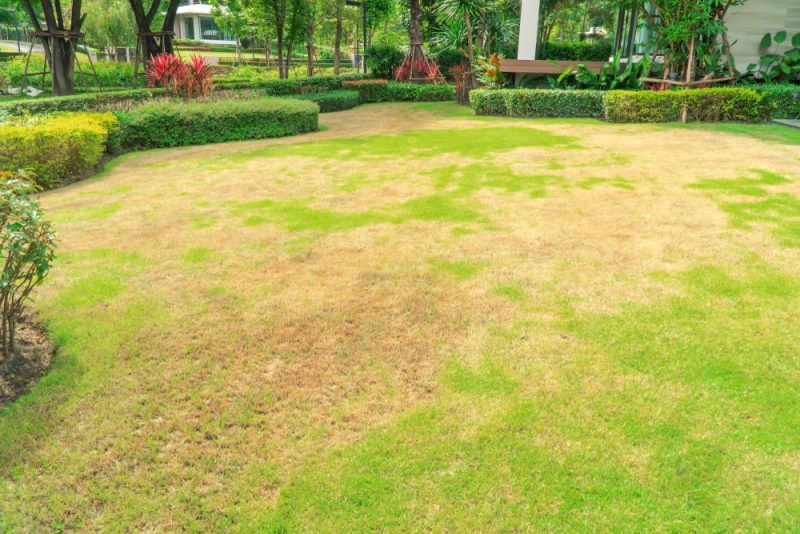
An Indirect Weed Control Method
Weeds are a menace to the lawn and kill young grass by intensively competing for vital nutrients and water. Denying the lawn water for spray painting will kill some weeds. In addition, since the paint is designed specifically for grass, some broad-leaved weeds will not survive whilst covered in pigments.
Come rainy season, grass tubers will germinate again while dead weeds will fertilize new growths.
Insulates Grass
A thin layer of paint insulates grass during winter, protecting it from frost damage. Furthermore, according to some homeowners, spray painting 2 or 3 weeks into spring leads to early sprouting.
Though this has not been scientifically proven, it is argued that the paint’s ability to insulate grass traps heat, triggering spring growth earlier on.
Unaffected by Rain, Snow, and Sun
Contrary to popular belief, lawn spray paints are not affected by rain or snow. They can’t be washed off or dissolved away. Once sprayed, the paint will stick on the plants for months.
Besides, most paints are UV resistant and rarely bleach during drought. If washed off before drying up, simply respray the area.
Safe for Pets and Kids
Certified turf paint doesn’t contain harmful, unregulated compounds and is relatively safe for kids and pets. However, the paint may kill some invertebrates by blocking spiracles.
Also, use it sparingly in areas near sources of water or ponds inhabited by fish and other organisms, as we cannot always take a manufacturer’s word at face value.
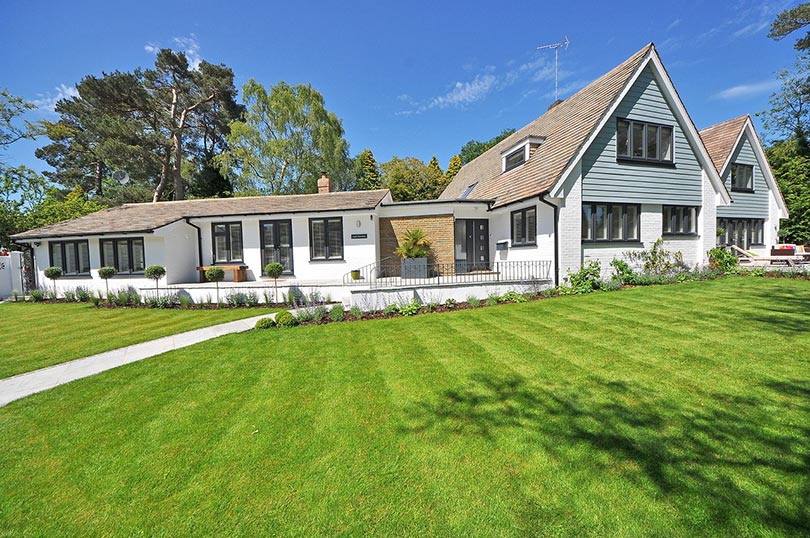
Disadvantages of Lawn Painting
Despite manufacturers claiming that the paint is biodegradable, it can introduce harmful pollutants into the soil.
Spray painting is not a long-term solution to drought effects. The emerald green cover may trick you into thinking the lawn is healthy, while behind the scenes, drought has taken a toll. You should irrigate and fertilize the lawn even after spray painting.
The paint does not work on other plant species on the lawn.
The 5 Steps for Spray Painting Grass
From simplicity to cost-saving, turf spraying has many advantages and is worth trying. Here is how to spray a lawn.
1. Prepare the Lawn
The first step in doing anything is preparation. In lawn care, preparing for painting entails;
Mowing the grass
Mow the grass to the standard height of 2.5 to 3 inches. This height leaves sufficient grass blades to form a thick, uniform green cover after painting. Anything below that will expose the ground to paint, leaving behind ugly patches. If you go higher than that, the grass will be too thick to be covered completely.
Rake out mowed grass, leaves, small stones, and tree branches
After mowing, remove mowed grass, leaves, and rocks from the lawn. Debris, such as cut grass, will rot away, and if you have painted on it, it will leave behind patches. Don’t paint on stones because the paint was designed for grass only, and you want stones to retain their natural aspects.
Use medium pressure to spray soil particles off the grass
After weeding or walking on grass with soiled boots, you may leave behind mud on the grass. Before painting, use a car pressure washer to remove soil from the grass. Paint doesn’t stick on soil particles.
Sod patches
If you intend to reestablish natural grass cover months after painting, it is essential to start now. Sod bare ground patches before painting. Sodding is a method of introducing grass to a lawn using a layer of established grass with roots and soil.
This method not only provides a surface for painting on but also ensures the lawn has a uniform cover.
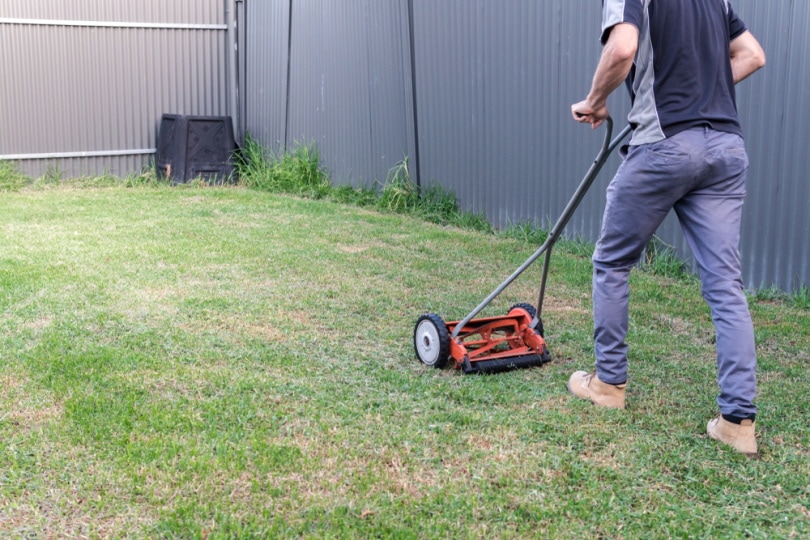
2. Assemble Spraying Equipment
Bring all spraying equipment to an accessible location, such as on the pavement, walkways, or near a source of water.
- A paint sprayer—airless, high volume-low pressure (HVLP) or pneumatic)
- Measuring jar
- Mixing rod
- Water
- Paint (ready-to-paint or concentrates)
3. Mix Paint with Water and Pour It Into the Sprayer
There are no standard formulas for mixing paint with water other than following the manufacturer’s instructions. Pour the required amount of paint into the sprayer and mix with the correct volume of water. Use the measuring jar to measure both paint and water.
Stir the mixture in the sprayer for 2 to 3 minutes until it forms a homogeneous solution. It is ready for spraying.
You may use a larger container to mix the paint before funneling it down into the sprayer if the sprayer has a small mouth.
For ready-to-use paint, you don’t need water. Simply shake the paint container for a few minutes and pour it into the sprayer. It is important to shake the paint container since if the paint sits undisturbed for long, heavier paint pigments sink to the bottom, leaving a colorless solution floating on top.
4. Test-Spray
This is a crucial step most lawn owners miss and end up with undesired results. Test-spray the paint on one of the backyard’s spots to assess color changes. If you are pleased with the results, continue with the job.

5. Spray the Lawn
When spraying your lawn, plan how you will go about it. Find a suitable corner as a starting point and walk backward to the finishing point.
Take a U-turn and repeat the same. While painting, note the boundary lines and don’t leave behind patches.
Dos and don’ts when spray painting a lawn.
- Put on protective clothes like an overall that matches the paint color and gloves.
- Ensure that the lawn is mowed and raked before spray painting.
- Start painting from a corner and work your way out of the lawn. Make sure you hit all the spots on the lawn.
- While spray painting, face the nozzle in the direction of the wind to avoid contact with your skin.
- Let the paint dry out in the sun for at least 24 hours before coming into contact with the lawn.
- Spray paint on a rainy or windy day. Rain will prolong the time it’ll take for the paint to dry.
- More likely than not, the paint will spill onto your clothes. Therefore, do not wear nice clothes when spray painting.
- Change the ratio of mixing spray paint. Changing the mix will interfere with the longevity of the paint.
- Spray-paint any other surface other than the lawn. Lawn paint is long-lasting and can stick to those surfaces for a long time.
Does Lawn Spray Painting Kill Grass?
No, spray painting will not kill your grass. This, however, depends on moderation when using the spray paint. As the saying goes, too much of anything is poisonous. Spraying too much kills the grass. When applied irrationally, the paint will create a barrier between the grass blades and stomata and the sunlight, moisture, and air necessary for growth. This barrier will choke grass of air and deprive it of sunlight.
If you strictly stick to these instructions and mix the ingredients correctly, then the spray paint will not kill your grass.
Another thing to remember is the spraying technique. Most people spray the entire grass blade as well as the ground beneath it. This technique will suffocate your grass and end up killing it.
In summary, practicing rationalization and following instructions when spray painting the lawn will result in healthy grass.
How Long Does Spray Paint Last on Grass?
The longevity of spray paint on grass majorly depends on the paint brand, the growth rate of your grass, and environmental conditions. Lawn paint brands will state the duration of the paint on your grass, and most of them last for 2–3 months. Be sure to check for how long the paint will last before buying.
The rate at which your grass grows also affects the longevity of the paint. Typically, grass grows at 3 centimeters per week. This means that within 2 months, your grass will be 21 centimeters tall, enough to make the paint invisible.
Finally, environmental conditions will determine how long the paint lasts on your lawn. Extreme heat breaks down paint pigments to reduce their durability.
Raining or snowing immediately after painting will dissolve away paint, reducing its service life. Only spray-paint the lawn on a calm sunny day to give the paint enough time to dry up.
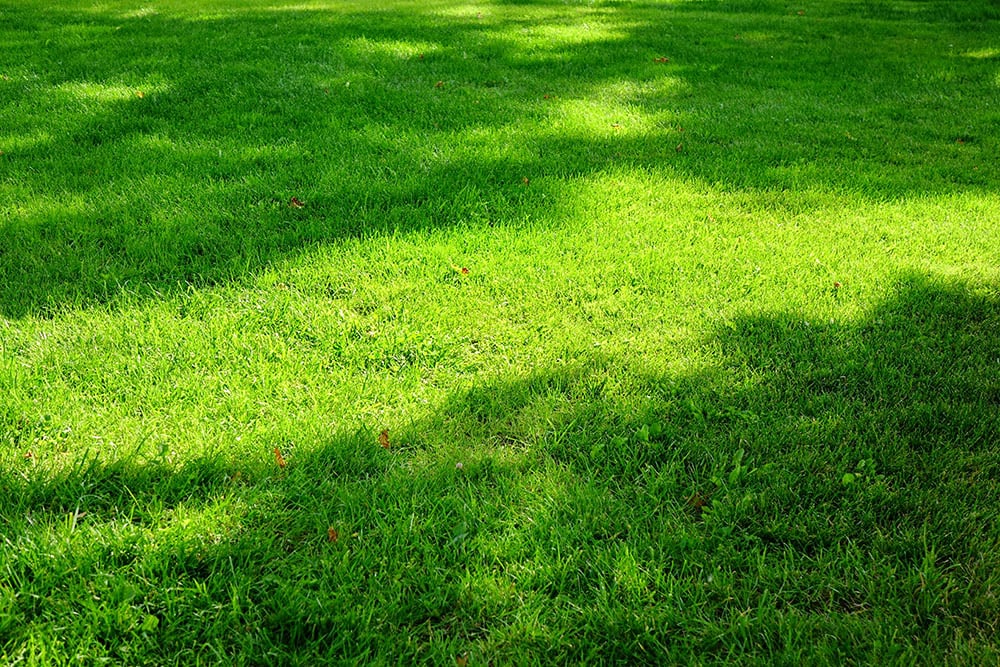
In Conclusion
The bottom line is, spray painting a lawn is very effective at retaining the green cover. It is cheap, fast, and has little to no environmental effects. To spray the lawn, mow it down, pick debris off the grass, and mix the paint properly.
- https://www.usscproducts.com/admin/source/Lawn_Painting_versus_Overseeding.pdf#page=7
- https://lawnlove.com/blog/lawn-watering-economics/
- https://www.groundwatergovernance.org/how-much-is-a-gallon-of-tap-water-in-california/
- https://www.homereference.net/lawn-painting/#:~:text=Prices%20vary%20by%20region%2C%20but,500%20square%20feet%20of%20lawn.
- https://getlawnstar.com/blog/grass-paint-what-the-heck-is-grass-paint/#:~:text=Once%20the%20grass%20paint%20dries,wild%20animals%2C%20or%20our%20waterways.
- https://www.thespruce.com/how-high-should-grass-be-cut-2132358#:~:text=The%20general%20rule%20of%20thumb,3%202%2F3%20inches%20high
Featured Image Credit: Sergey Gerashchenko, Shutterstock
Contents

